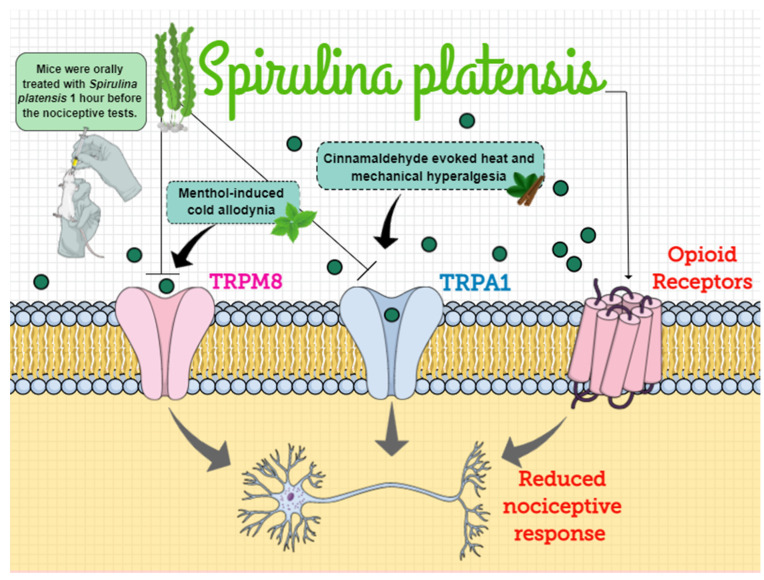Figure 8.
The mechanisms of action behind the antinociceptive effects of Spirulina platensis. Spirulina belongs to a group of aquatic organisms named blue-green algae and to the phylum Cyanobacteria. Considering that the use of this algae is widespread among people due to its diverse biological activities, herein, we demonstrated the possible mechanism of action by which Spirulina could exert its antinociceptive effects in mice submitted to different models of acute nociceptive response. Our results demonstrated that Spirulina markedly decreased cold-allodynia, heat, and mechanical hyperalgesia through inhibition of TRPM8 and TRPA1 ion channels’ activation by their respective agonists—menthol and cinnamaldehyde. Additionally, we also reported that naloxone reversed the antinociceptive effect of Spirulina during the formalin test, which suggests that the analgesic effect of Spirulina seems to be mediated, at least partially, by the opioid system. Thus, it is possible to hypothesize that Spirulina exerts antinociceptive effects during inflammatory models by modulation of TRPM8/TRPA1 channels and endogenous opioids signaling pathways. TRPM8: transient receptor potential cation channel subfamily M (melastatin) member 8; TRPA1: transient receptor potential ankyrin 1 channel.

